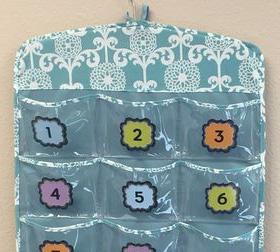
3 minute read
ESSA Myths
THE EVERY STUDENT SUCCEEDS ACT (ESSA) MYTHBUSTERS 49 Find out more: GetESSARight.org
Myth: ESSA significantly changes the amount ofstandardized testing called for under NCLB. TRUTH: States are still mandated to test annually in math and reading grades 3-8 and once in high school with grade span testing for science (once in grades 3-5, 6-9, 10-12). However, within ESSA there is less focus on, and a decoupling of, the high stakes associated with standardized tests, so students have more time to learn and teachers have more time to teach. Myth: Only school personnel, like the superintendent and Board ofEducation members, have a voice in state and local plans. TRUTH: Educators and other stakeholders have a guaranteed seat at the table empowering educators with a greater voice in educational and instructional decisions and incentivizing collaboration of educators, families, and communities to support local schools. Myth: Accountability is based only on test scores with ESSA. Schools and teachers are rated solely on how many students scored proficient on the standardized tests. TRUTH: The law requires that state-designed accountability systems be comprised of multiple indicators. These must include at least one "opportunity" indicator of school success or student support such as: access to advanced coursework; positive and safe school climate; bullying-free environment; fine arts education; regular physical education; and access to counselors and nurses. These opportunity indicators can help ensure that states report on resource inequities and opportunity gaps and take action to close them. Myth : ESSA only benefits a small percentage ofstudents. TRUTH: ESSA strives to ensure that all students receive a high-quality and equitable education. It provides more opportunity for all students and includes—for the first time—indicators of school success or student support (the “Opportunity Indicators”) to help identify and begin closing opportunity gaps. Myth: State and local report cards are no longer required to report information disaggregated by student subgroup. TRUTH: States must collect and report on the indicators in its accountability system, disaggregated by student subgroup, and should quickly remedy any gaps in the resources, supports, and programs. Subgroups of students include: 1) economically disadvantaged students; 2) students from major racial and ethnic groups; 3) children with disabilities; and 4) English learners. Local school districts must annually disseminate a report card that mirrors the state report card. Local report cards may contain additional indicators of school quality or student success to provide a means to identify inequities in resource inputs.
Advocacy
Classroom Hacks
Time to work smarter, not harder. Maine Educator scoured through hundreds of classroom and teacher hacks to find the best ones out there to help you start your year off right.
4 Don’t waste time passing out papers, use a shoe rack and place assignments in each space for students to retrieve on their own.
4 Scissors full of gunk and glue? Throw them in the dishwasher!
4 Straws are for more than drinking. Cut one in half or thirds and duct tape it down to a desk for an instant pencil holder. This should help cut down on the “I don’t have a pencil” comments.
4 Use a form of sign language with your students to keep disruptions to a minimum. Create crafty cards to let kids in on the signals. Want a free set? Download them on our website, maineea.org
4 Save your fingernails and get the glue out of the tops by soaking it in vegetable oil.


4 Before streaming, there were DVDs. Get some old DVD cases and use them as individual dry erase lapboards for your students.
4 Be ready for parents/guardians and send them a QR code with all your information they can easily scan and save. Have the QR code ready for open house and you’re sure to win over the tech-savvy parents.

4 Control classroom noise with an app like Noise Down. The app will automatically sound an alarm when things get too loud.
4 Cell Phone Parking—Don’t want your students on their phones while you’re teaching? Take the advice of some of our MEA members in higher education and create a cell phone hotel with an over-thedoor shoe or accessory organizer. Put number cards in each pocket so students can keep track of their phones.










